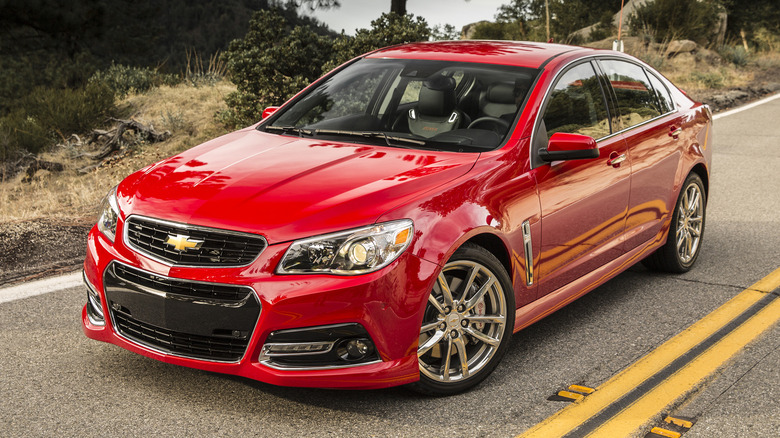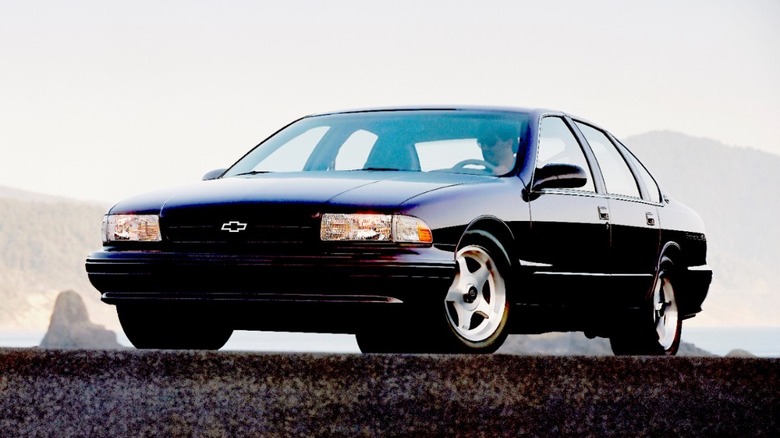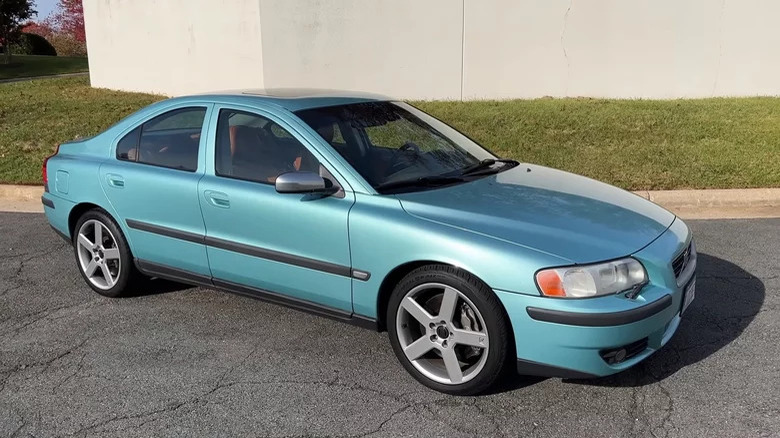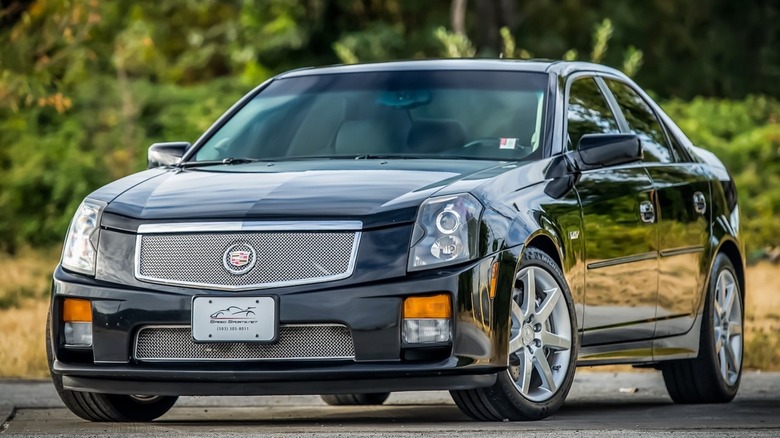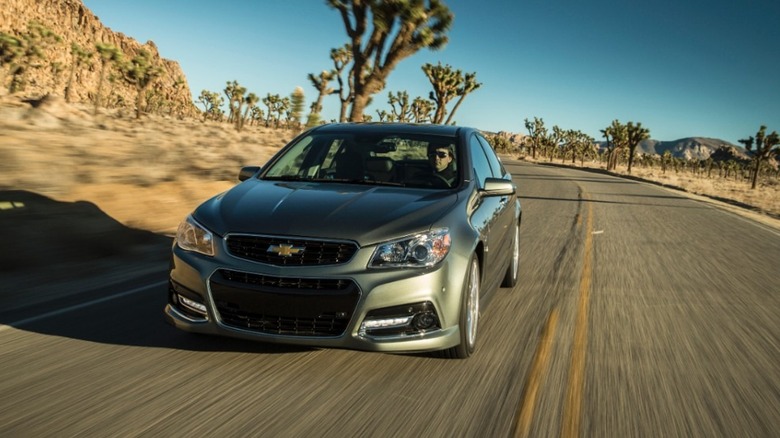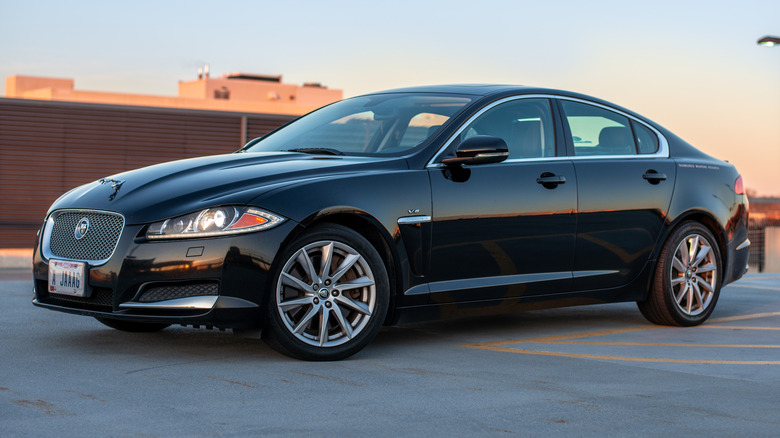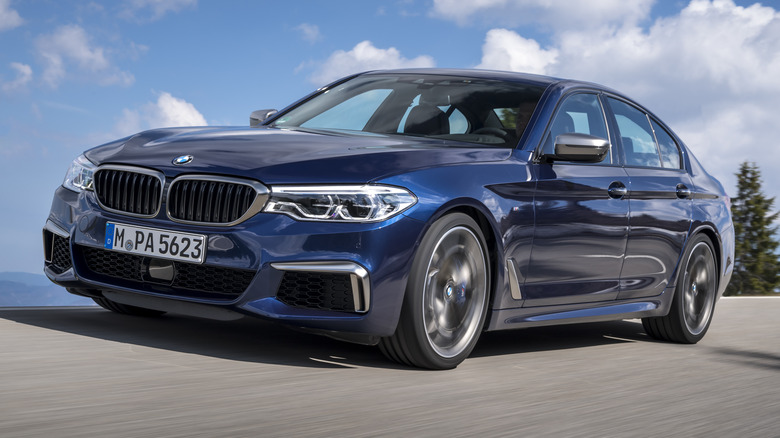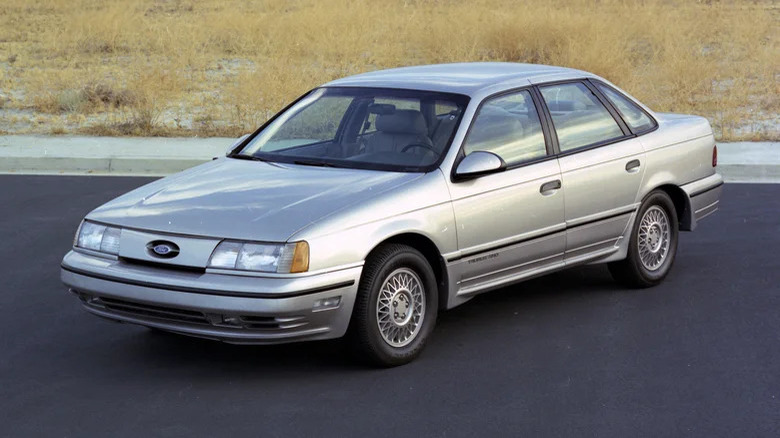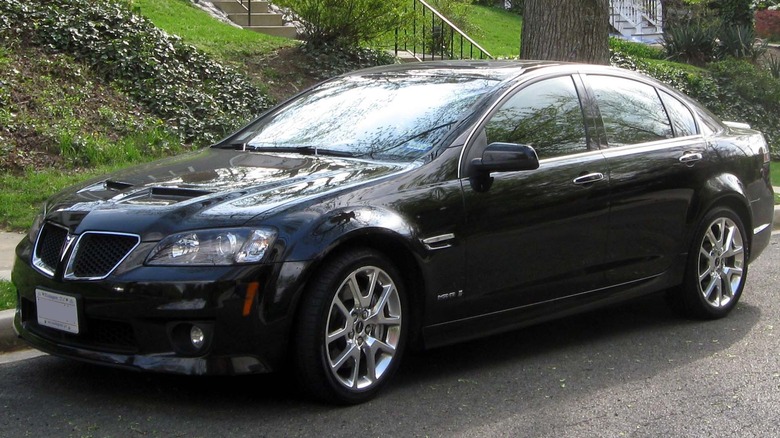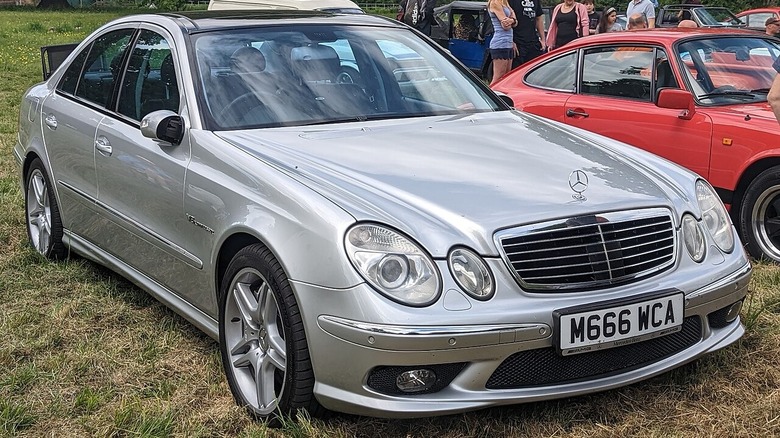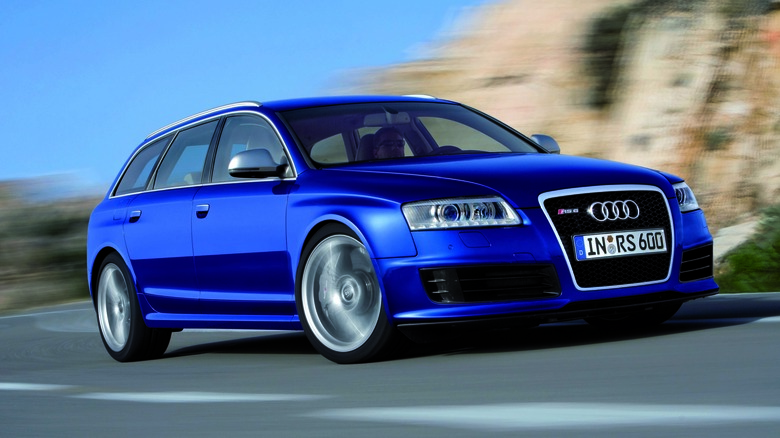Sleepers: 10 Cars That Are Way Faster Than They Look
For the majority of performance cars, looking good is just as important as being fast. After all, buyers who are willing to spend significant premiums on the most powerful cars are usually keen on showing their new toy off as much as possible. Whether it's a body kit, racing wheels, or prominent badging, it's usually pretty easy to spot a performance car. However, that's not always the case.
For a variety of reasons, some manufacturers choose to hide their most powerful engines in cars with nondescript styling. They're easy to pass in the street or drive by on the highway — that is, until you see one take off and leave everyone else in the dust. These cars are commonly referred to as sleepers, and for some enthusiasts, they're an ideal combination. Thundering acceleration that's only a push of the throttle away, but without the hassle of daily driving a flashy performance car. These sleepers are leaders from both domestic and foreign manufacturers.
Chevrolet Impala SS
The '90s resurrection of the Impala SS nameplate was a risky move. The name invoked memories of a golden age of Chevy cars, yet the basis for this resurrected car was the underwhelming and rather forgettable Caprice. While the SS kept some of its predecessor's nondescript styling, it was certainly not forgettable. That was largely down to the 5.7L LT1 V8 engine under the hood, sourced from the Corvette. In the Impala SS, it made 260 horsepower, making it good for a quarter mile time of 15.0 seconds according to Car and Driver's testing.
The car sold well over the three years it was offered, with just under 70,000 examples leaving the factory. Most were finished in black, but red and green were also offered. In the decades since production ended, the Impala SS has become a desirable collectors' car, with its understated looks and comfortable ride proving just as appealing to buyers nearly three decades on.
Volvo S60 R
Although Volvo is most famous for its focus on safety and sensibility, it's been known to release the odd under-the-radar performance car. The S60 R is one such car — it's essentially a 300-horsepower sports sedan that looks no different at first glance from the standard S60. Testing by Autocar revealed a 0-60 mph time of 6.3 seconds, with its top speed matching that of its chief German rivals, at just over 155 mph.
A standard six-speed manual transmission won the S60 R further enthusiast points, although a five-speed auto 'box was also available. Power was sent to all wheels while the brand's Continuously Control Chassis Concept (Four C) system ensured sharp handling across a variety of road surfaces.
Despite its performance credentials, the S60 R never gained much attention in America. However, that has meant that used prices have remained temptingly cheap. It's one of the fastest cars you can buy for less than $10,000, although it's worth noting that the added electronics compared to the standard S60 means that maintenance won't be quite as cheap.
Cadillac CTS-V
While modern CTS-V Cadillacs sport a few more visual extras to differentiate them from their lesser counterparts, the original CTS-V, unveiled in 2004, is very stealthy. Depending on the year, Cadillac either packed an LS6 or an LS2 V8 under the hood, both with 400 horsepower. A six-speed manual transmission was standard, and unlike other Cadillacs, the suspension was tuned to allow sharper cornering at high speeds. Straight line prowess remained the car's biggest selling point, however, with LS2-powered cars clocking sub-five second 0-60 mph times in Car and Driver's testing.
The CTS-V was a major change of direction for Cadillac. Instead of simply offering the smoothest ride or plushest interior, the car aimed squarely at the European sports sedans. It was fast enough to keep up with rivals from BMW, Mercedes-AMG, and Audi, even if some GM build quality issues prevented it from being a top competitor in its segment. Few examples were sold during the production run — less than 9,000 in total — so finding one in good condition today will potentially take some effort. The good news is that prices for those in decent shape have remained relatively affordable for now.
Chevrolet SS
At first glance, the Chevrolet SS is just another four-door sedan with a Bow Tie badge. It's an obscure one, too, with less than 13,000 examples produced across its lifespan. However, look across auction sites and you'll find the resale value of the car hovering right around its original $44,500 asking price. The reason why can be found under the hood: a 6.2L LS3 V8 making 415 horsepower. Not exactly what you might expect to find in the average Chevy sedan.
That's because this was something far from the rental car image most people associated with its looks. It was a proper family-hauling muscle car, hailing not from America but instead from GM's Australian subsidiary, Holden. Australians had continued building muscle cars long after American manufacturers had given up, with the Chevy SS being a rebadged variant of the long-running Holden Commodore.
Buyers who overlooked the SS in its original production run between 2014 and 2017 have missed their chance, as the factory that made the car was closed the same year SS production ended. The Holden brand itself was axed in 2021 as GM pulled out of the right-hand drive market, leaving virtually zero chance for an Aussie-built successor to arrive. That's exactly why collectors are willing to pay increasingly high premiums for this seemingly ordinary-looking Chevy.
Jaguar XFR
The standard XF sedan ticked all the stereotypical boxes a Jaguar should. It was sophisticated, luxurious, and featured questionable reliability. In top-spec XFR form, it was also surprisingly fast, despite looking extremely similar to its base-spec siblings. It boasted a 5.0L supercharged V8 engine making 503 horsepower, which meant an officially quoted 0-60 mph time of just 4.7 seconds. Top speed was limited to match its German rivals, at 155 mph. Without the limiter, speeds as high as 195 mph were reportedly possible.
Despite featuring performance that rivaled the likes of the BMW M5, the XFR was still a Jaguar at everyday speeds. That is, it wasn't some track day toy hiding in the body of a family sedan — it was genuinely practical and easy enough to live with. However, its sleeper looks combined with its Jaguar badge meant that it was largely overlooked by buyers outside of the brand's existing client base.
BMW M550i xDrive
The BMW M5 has long been considered a benchmark in the performance sedan segment, but one of its closest rivals comes from within the 5 Series range. The M550i xDrive is a step below the full-fat M5 in the lineup, but it offers a lot of the same charms and can be had for substantially less. It's also less obviously a performance sedan than the M5, with only some new wheels and subtle exterior trim tweaks differentiating it from lesser 5 Series models.
Despite that, it packs roughly 90% of the power of the M5 and boasts similarly sharp handling. Not quite as sharp as the top-spec car, mind: The M550i xDrive is set up more as a powerful daily driver than a world-beating track sedan, and so it's a little comfier on rougher roads. The cabin is also handsomely equipped, with the optional Nappa leather adding an extra touch of luxury. It might be a great sleeper sedan, but it comes at a cost. SlashGear's fully optioned test car's MSRP reached more than $93,000, making it one of the priciest cars on this list.
Ford Taurus SHO
When the first generation Ford Taurus SHO launched in 1989, it caused a stir. It was a fairly ordinary-looking Taurus, but it boasted a 3.0L V6 engine developed in collaboration with Yamaha. It made 220 horsepower and was only available with a five-speed manual transmission. Alongside the uprated powertrain, a revised suspension was also fitted to ensure the car could handle its added power. The first generation car was only sold for three model years between 1989 and 1991, but in that time it shifted 15,000 units.
That was a tiny fraction of what the standard Taurus was selling. Partly, those numbers were down to what makes it unique today. In terms of styling, it was too similar to the regular Taurus, and many potential buyers weren't sold on the idea of dropping $20,000 on a non-descript sedan. However, those who did cough up the cash were rewarded with one of the best sleeper cars of the era.
Pontiac G8 GXP
The Pontiac G8 GXP was built to the same recipe as its successor, the Chevrolet SS. Take a Holden muscle car from Australia, import it to America, and slap a new badge on it. The Aussie car in question was the LS3-powered Commodore, which made over 400 horsepower and followed the trusty front engine, rear drive formula that muscle cars have relied on since their inception.
In an early road test, Car and Driver referred to the G8 GXP as a "four-door Corvette," with its impressive power and handling made even better by the fact that it could be picked up for just $40,000. However, unlike the Corvette, it lacked any distinctive styling, and this undoubtedly hurt its sales chances.
Pontiac had struggled with its image for years beforehand, but the G8 GXP proved that it could still sell proper performance cars, even if they weren't built in America. However, it wasn't enough to save the brand, and by 2009, GM had announced it would be retiring Pontiac altogether. With it, buyers lost one of the brand's last genuinely impressive cars. Holden itself would suffer the same fate less than a decade later, with Australian production ceasing in 2017.
[Featured image by IFCAR via Wikimedia Commons | Cropped and scaled | Public Domain]
Mercedes-Benz E55 AMG
While several AMG models could be considered sleepers, the W211 E55 AMG stands out from the rest as being particularly under-the-radar. It boasted 476 horsepower thanks to its supercharged 5.4L V8 engine, giving it a quoted 0-60 mph time of just 4.6 seconds. However, look past the subtle AMG badging and quad exhausts, and there isn't that much to give away just how fast the car is at a glance. Even inside, it's hardly a typical performance car, with plush leather seats and all the latest infotainment technology from the era.
The car was limited to 155 mph but could push 180 mph without the limiter. Despite that power, the E55 AMG was refined and comfortable enough for daily driving, and it was only when you put your foot to the floor that you could get a full sense of what it was capable of. It's more than possible to pick up passengers, drive them around town, and drop them off without them even noticing they were in a performance car. It's this anonymity that makes E-Class AMGs the perfect candidate for clandestine high-speed runs – in fact, the infamous Cannonball Run record is currently held by the E55's successor, an E63 AMG.
[Featured image by Calreyn88 via Wikimedia Commons | Cropped and scaled | CC BY-SA 4.0]
Audi RS6
Built both as a sedan and a wagon, the second-gen Audi RS6 looked much like any other Audi executive car in passing. However, under the hood sat the V10 engine from the Lamborghini Gallardo, enhanced with twin turbochargers. That pushed its power output up to 572 horsepower, with its Quattro all-wheel drive system ensuring all those horses were delivered to the asphalt as efficiently as possible. The sprint from 0-62 mph took just 4.6 seconds, while a 155 mph limiter ensured the car stuck to the German gentleman's agreement. Without it, the car could reportedly reach more than 200 mph.
Unlike the modern Audi RS6 which features unique styling to reinforce its supercar-rivaling performance, this generation of the RS6 was largely anonymous both inside and out. That did, however, make it a surprisingly practical family car, with plenty of room in the back for passengers and their luggage. The car was never sold in the U.S., but with an asking price in Europe equivalent to more than $100,000, it's safe to assume it would never have been a bestseller for Audi anyway. However, for well-heeled enthusiasts looking for the ultimate sleeper, few other cars come close.
